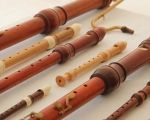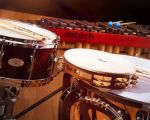- 1-Understanding-What-Instrument-Is-Played-Without-Touch
- 2-The-Theremin-A-Pioneer-of-Touchless-Music
- 3-How-Does-The-Theremin-Work
- 4-Other-Modern-Touchless-Instruments-and-Technologies
- 5-Real-Life-Story-A-Musician-and-The-Theremin-Connection
- 6-Why-Touchless-Instruments-Are-Shaping-The-Future-Of-Music
1. Understanding What Instrument Is Played Without Touch
The question “what musical instrument is played without touching it” sparks curiosity because it challenges the traditional idea that playing music requires physical contact. In fact, there is a unique category of instruments known as touchless or electronic instruments that allow performers to create sounds by manipulating space and air rather than pressing strings or keys.
Among these, the theremin stands out as the most iconic example. Invented in the early 20th century, it remains one of the very few instruments that you can play solely by moving your hands near its antennas without making any direct contact.
2. The Theremin: A Pioneer of Touchless Music
The theremin was created by Russian inventor Leon Theremin in 1920. Unlike traditional instruments, it requires no physical touch to produce sound. The performer’s hands move in the air near two metal antennas—one controls pitch and the other controls volume.
This instrument quickly gained attention for its eerie, otherworldly sound often associated with science fiction movies and experimental music. The theremin's distinctive tone and touchless playstyle have captivated musicians and audiences alike for over a century.
3. How Does The Theremin Work?
The theremin operates using the principle of electromagnetic fields. The antennas emit electromagnetic waves, and when a player’s hand moves closer or farther from these antennas, it alters the capacitance around them. This change is converted into electrical signals that control the pitch and volume of the sound produced.
Playing the theremin requires precise hand movements and a refined sense of spatial awareness, making it a challenging yet rewarding instrument. Musicians develop muscle memory to hit the correct notes without any physical reference points.
4. Other Modern Touchless Instruments and Technologies
While the theremin is the most famous, technological advances have led to new touchless instruments that use sensors, cameras, and motion detection. For example, MIDI controllers with motion sensors allow artists to modulate sounds through gestures in the air.
Devices like the Leap Motion controller or motion-sensing gloves can trigger sounds, effects, or even control digital instruments without any physical contact. These innovations broaden creative possibilities and attract musicians interested in blending technology with performance.
5. Real-Life Story: A Musician and The Theremin Connection
Emma, an electronic music producer from Los Angeles, shares her journey discovering the theremin during college. Initially skeptical, she was amazed by its unique interface and haunting melodies. Emma practiced tirelessly to master its nuances, integrating the theremin into her electronic compositions to add an organic, ethereal layer.
Her story highlights how the theremin not only challenges traditional performance methods but also inspires creativity by merging human touchlessness with expressive sound.
6. Why Touchless Instruments Are Shaping the Future of Music
Touchless instruments like the theremin and modern motion controllers open new frontiers for musical expression. They allow performers to interact with sound in a three-dimensional space, offering possibilities that traditional instruments cannot match.
As technology continues to evolve, touchless instruments are becoming more accessible, encouraging musicians to experiment and audiences to experience music in innovative ways. For those curious about exploring these fascinating instruments, Beat Trigger offers resources and gear recommendations that help beginners and professionals alike dive into the world of touchless music creation.








